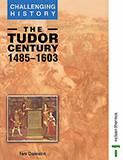‘CPD in a Textbook’(1983-2016)
Contexts, Aims and Creativity in Writing and Editing History Textbooks
(and can ‘old’ textbooks still provide useful CPD?)
This section of the site contains three units:
KS3 Textbooks
From teaching about concepts to challenging misconceptions: What were we modelling in five KS3 series, 1982-2022?
GCSE Textbooks
What did – and didn’t – SHP achieve in its GCSE books c.1980 to c.2010?
A Level Textbooks
Building A level students’ confidence and ability as learners: Writing and Editing A level books 1990-2015
Introduction
These articles were initially prompted by the experience of being interviewed by researchers about the textbooks I’d helped create as an editor and writer. During and after the interviews I became very aware that you can’t analyse or understand textbooks or other teaching resources – even those from recent decades – without understanding the specific educational and publishing contexts in which they were produced and being aware of the aims of the editors and writers.
Explanation of those contexts is therefore one major theme in these articles but, as I wrote the articles, one particular context emerged as the dominant influence on the books – that in every series we were trying to provide teachers with ‘CPD in a textbook’, modelling possible solutions to specific planning, teaching and learning problems. I’ve therefore attempted to analyse how successfully each series I worked on did deliver our CPD aims – necessarily a subjective judgement – and why or why we didn’t succeed.
That focus on what we were modelling in each series then led to another question I’ve explored at the end of each article – are these books (many no longer in print but often available far more cheaply than when originally published!) of continuing use to teachers in the 2020s and beyond? I think we can learn from what the books did well – and there was plenty that was successful – and what we didn’t get right. One particular failure stands out – although all these books were written for SHP or heavily influenced by SHP’s ideas, none give enough space to SHP’s core aim, to show students how their knowledge of the past and their understanding of how history is studied can help them make sense of and interpret their own world. It’s been really disappointing to see how this vital aim kept skipping away from our clutches.
One final thread through the articles is creativity and fun! Many non-teachers are stunned by the idea that there’s anything creative about writing textbooks but creativity was what I enjoyed most – creativity in planning, in writing, in devising activities, artwork and diagrams, in designing pages, in having second, third and fourth thoughts about what to include and how to present it. And there was huge enjoyment in the research in university libraries and hunched over my books at home. It was always good to put the finished book on the shelf when it was published but the real enjoyment came in the time spent researching and creating the book.
Two final things by way of introduction:
1. I have only written about my own books and experiences. I haven’t tried to generalise from my experience to textbooks in general because each publisher has its own culture and expectations of the roles of authors and series editors. I was very fortunate to work for John Murray, now Hodder Education, from 1995 to 2016 and particularly with their Commissioning Editor, Jim Belben, who gave me far more freedom to be inventive and experimental than I suspect would have been the case with other publishers. Jim’s huge contribution to history education through publishing was recognised when he was awarded an Honorary Fellowship by the Historical Association.
2. A note on terminology – as Series Editor I was not a direct employee of the publisher but worked closely with the publisher’s Commissioning Editor, from creating initial ideas to checking final proofs. Once a book was underway, I did the day to day work with authors on the minutiae of the books, taking this responsibility off the shoulders of the Commissioning Editors.
Finally, my lasting thanks to Chris Culpin, Dale Banham, Jim Belben and Ros Ramage for their part in making work on these books so much fun and to all the individual authors for all the enjoyment and satisfaction I experienced when working together.

In amazing company – a small place on Hachette’s ‘Authors’ Wall’.
This records some of the company’s authors since John Murray, the oldest part of Hachette, was founded in 1768.



